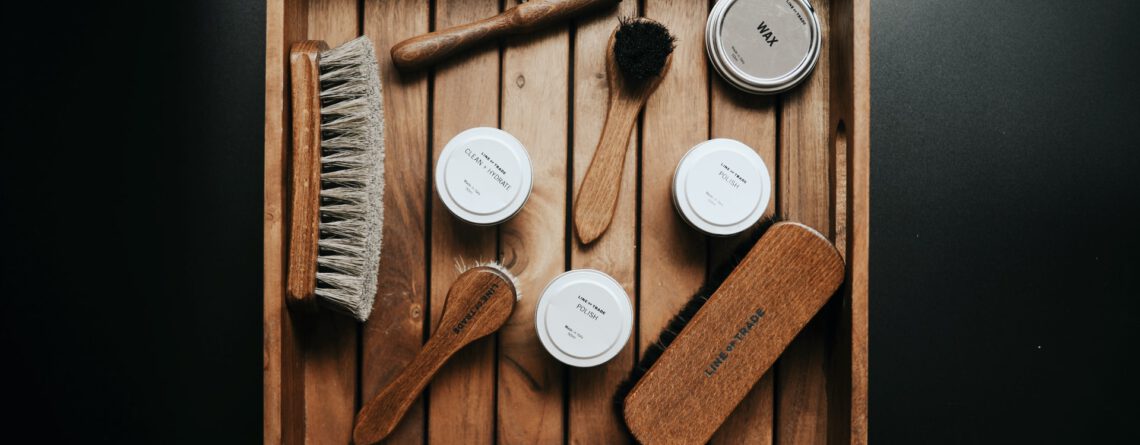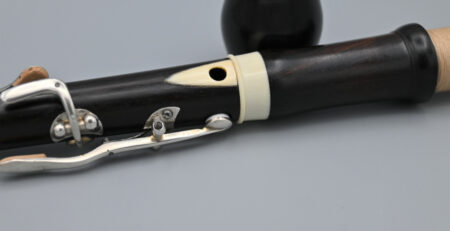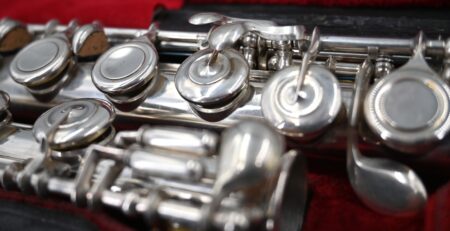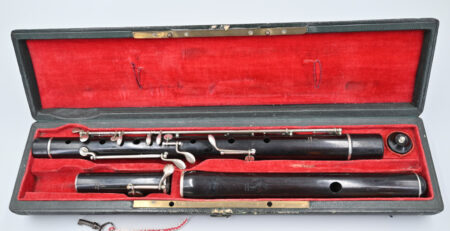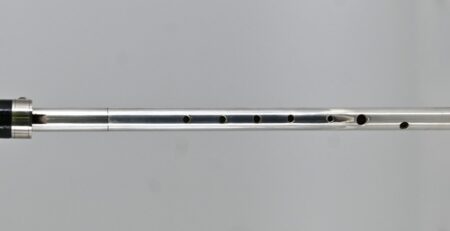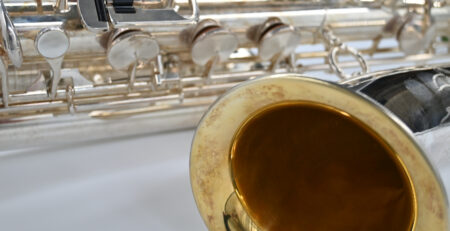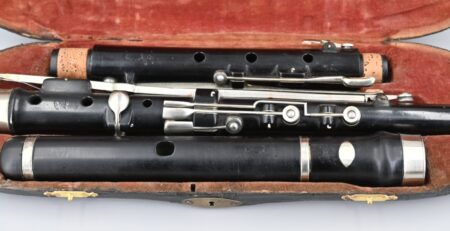How to look after old woodwind instruments
Every old/antique woodwind instrument has specific care needs because of its individual construction and material properties. But there are some general recommendations to follow.
The playability of old, antique wind instruments is only achieved if the instrument is restored and prepared for its function. Even a short play or improper assembly can lead to damage. To avoid this, here are four tips.
- Store old woodwind instruments properly
Wind instruments should be stored at constant temperatures and above all constant humidity. Humidity levels of 50-55% are recommended, although may not always be possible. Our modern central heating systems and air conditioning systems reduce humidity. Therefore, if the humidity is low, consider buying a humidifier.
Whether instruments are stored in beautiful showcases or in their original cases is a matter of personal taste of course. However, when displaying instruments in showcases or directly in rooms, attention must be paid to the lighting, which should under no circumstances have a high UV level. Sunlight is harmful to many surfaces and lacquers. Lamps should not heat up showcases.
- Look after the tenon joints
Woodwind instruments from days gone by are usually made of several parts. These parts are connected by tenon joints. Until about 1800, thread windings were always applied to the tenon. The opposite side, the so-called socket, is usually conical. The yarns used at that time (flax, linen) contract due to moisture and deform the underlying wood. It is not uncommon for the tenon and socket to be warped into an oval shape. If they are oval, when assembled together, they twist against each other and cracks can quickly form. There is also a high risk of cracks forming on the socket if too much thread is wound on or if it swells up during play. So, it is important to be extremely careful during assembly!
For the windings of old woodwind instruments, polyester yarn is recommended as it does not contract. Windings must be loose, i.e. never wound with too much tension. In addition, the connection must never be too tight.
Later woodwind instruments, from 1850 at the latest, have cork joints. The sockets are almost always cylindrical. The ends of the tenons on these instruments are often protected with metal.
- Avoiding and dealing with cracks in the wood
Cracks in old woodwind instruments are common. There are various possible causes for these cracks:
- mechanical damage usually found at the joints and caused by force acting on the sockets
- cracking or splitting due to incorporated metal parts, e.g. head joint of a flute
- stress cracks in the material, often due to too dry storage
Cracks do not automatically have a negative influence on the playability and sound of an instrument. In most cases, they can be repaired by a good restorer.
Cracks that have already been restored should be checked at regular intervals, so that countermeasures can be taken in good time if they should split open again.
Avoid new cracks from forming by keeping the tenon joints in good condition and checking and caring for them.
- Oil woodwind instruments
Wood absorbs moisture like a sponge and changes enormously when damp. With woodwind instruments, this occurs mainly on the inside – the inner bore of the instruments. Due to playing humidity, there is 100 per cent humidity on the inside, while on the outside it is much lower. This can lead to the wood warping, but also stress cracks forming on the outside surface.
To prevent damage, it is important to protect the wood from water penetration. This task is performed by the oil – just like impregnating shoes. So old instruments should be oiled before playing, at least on the inside. The type of oil to be used is very important: it should be as acid-free and non-resinous as possible. Resinous oils such as linseed oil produce a layer that can clog the inner bore. We recommend almond oil or rapeseed oil.
Regular oiling should be carried out on frequently used instruments. For this purpose, the individual parts are wetted with a little oil on the inside when dry. Instruments that are unvarnished on the outside can also be oiled there too. Let the oil soak in overnight and then wipe off any excess. How often an instrument should be oiled also depends on how much oil has been absorbed by the wood. For instruments that are in constant use, we recommend four to six oilings per year.
Always check your instrument for cracks before oiling. If oil penetrates a crack, gluing and restoring the crack becomes much more difficult.
Summing up
Since the 1950s, playing on old instruments and also on their replicas has been an important part of our musical life. The sound of original instruments differs fundamentally from the instruments of our time and is often appropriate for playing the music of the corresponding period.
Nevertheless, it must be pointed out that not every old woodwind instrument automatically, by virtue of its age alone, so to speak, represents a well playable instrument.
However, if we dedicate ourselves to the old originals with respect and humility, we can learn a lot and experience so much joy when making music with them and other people.

